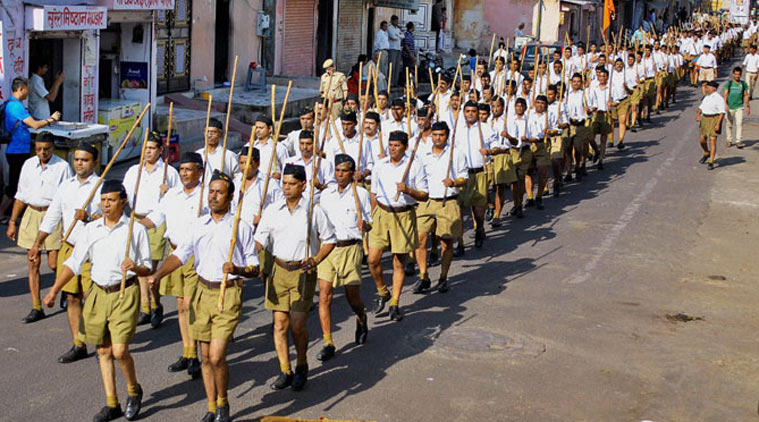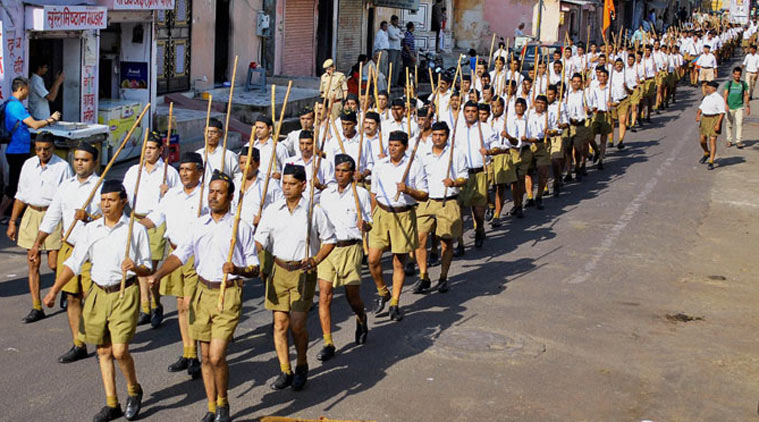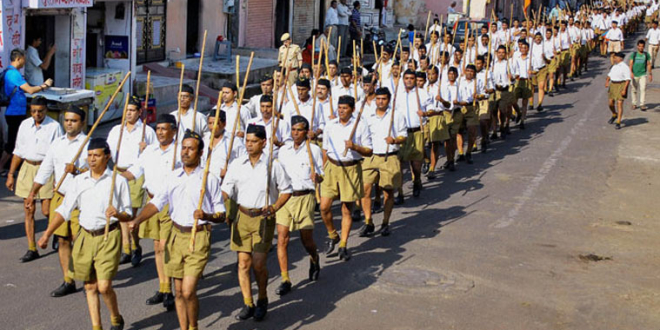

I read with interest Ramachandra Guha’s ‘Bhagwat’s Ambedkar’ (The Indian Express, December 10). I was amused; amused to learn that historians are only interested in the past and are oblivious to the present. But society and institutions work and move on the well-known principle of “By the past, through the present, to the future”. Hindu society has moved through the ages following this principle. S. Radhakrishnan correctly stated that “Hinduism is a movement, not a position; a process, not a result; a growing tradition, not a fixed revelation.” The RSS, too, moved on, on this principle.
The erudite Guha writes, “The RSS took part in neither the Salt Satyagraha nor the Quit India movement.” When was the Salt Satyagraha started? I think it was in 1930. The average age of RSS volunteers must have been around 15 or 16 at that time. Are they expected to have taken part in that satyagraha? But the founder of the RSS, K.B. Hedgewar, took part in the forest satyagraha, the equivalent of the Salt Satyagraha, in Vidarbha. He was arrested and sentenced to nine months of rigorous imprisonment.
As for the Quit India movement, Gandhiji did not want to start it in August 1942. He had given the British six months to “Quit India”. The British knew that Gandhiji needed this time to organise the agitation. The British decided to instantly crush the movement and arrested Congress leaders. After the arrests, the Quit India movement started but was scattered and erratic. It was intense and widespread in Bihar but not in UP. It was spirited in Satara but not in Pune. In Vidarbha, Chimur witnessed a violent outbreak but Chandrapur was comparatively calm. Had Gandhiji got time to plan and organise the movement, he would certainly have contacted the RSS. However, RSS volunteers on their own took part in the agitation. In Chimur, those who were convicted and sentenced to death included one RSS worker. The person who hoisted the tricolour at the government building in Ramtek was an RSS volunteer. While underground, Aruna Asaf Ali got asylum in Hansraj Gupta’s house in Delhi. Gupta later became chief of the RSS’s Delhi unit. Nana Patil of Satara, who led a fierce anti-British agitation, was underground for many days in the house of
Pandit Satwalekar, the sanghachalak of the nearby town.
Now about B.R. Ambedkar. Guha writes that the RSS and its associated bodies opposed Ambedkar in 1949-51. Which were these associated bodies of the RSS in 1949-51? The Jana Sangh was started in 1951. How can the RSS be held responsible for all those opposing the Hindu Code Bill. Are shankaracharyas members of the RSS? Those who are associated with Hindu religious activities can testify to how difficult it is to bring all shankaracharyas, mahantas and mathadhipatis on one platform. It was only in 1964 that, because of the RSS’s efforts, they came on one platform and took the historic decision to declare that untouchability is not sanctioned by our dharma. The slogan was “all Hindus are brothers and no Hindu is fallen”.
It is true that the RSS was against Partition. It is a fact that the RSS had felt convinced that Mahatmaji will not accede to Partition. In the 1946 elections, the main point of the Congress manifesto was a united India, while that of the Muslim League was Partition. The Muslim League did not get a majority even in the Northwest Frontier Province. Even Gandhiji had said that the country will be partitioned “over my dead body”. What happened after that is a mystery and, betraying the people’s mandate, the Congress accepted Partition.
In RSS shakhas, “Ekatmata Stotra (Hymn for Integration)” is recited daily. It was first introduced in the 1950s and was a collection of shlokas in praise of saints, warriors and incarnations. It was revised in the 1970s and titled “Ekatmata Stotra”. The revised version includes names of great modern-day men: Ramakrishna Paramhansa, Rabindranath Tagore, Dadabhai Naoroji, Mahatma Gandhi, Raman Maharshi, Subhas Chandra Bose, V.D. Savarkar, Ambedkar, Mahatma Phule, Narayan Guru of Kerala as well as Hedgewar and M.S. Golwalkar. Ambedkar’s greatness has not dawned on the RSS in 2015. The new hymn was conceived during the Emergency.
It is not easy to understand the RSS. It does not fit into any model of existing parties and institutions. The RSS is unique. To understand it, you have to free your mind from prejudice.
The writer, an RSS ideologue, is former editor, ‘Tarun Bharat’, Nagpur
![]()
Source: New feed






